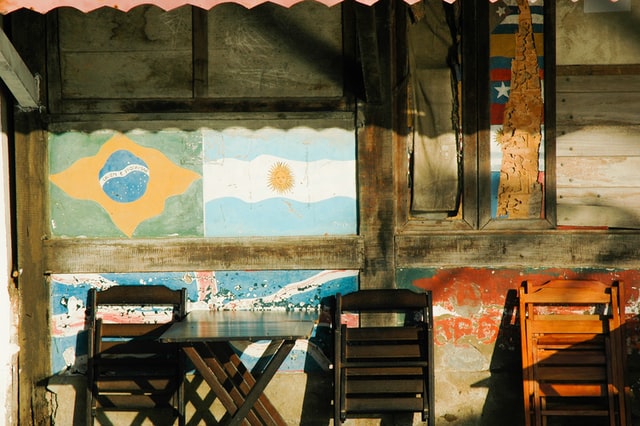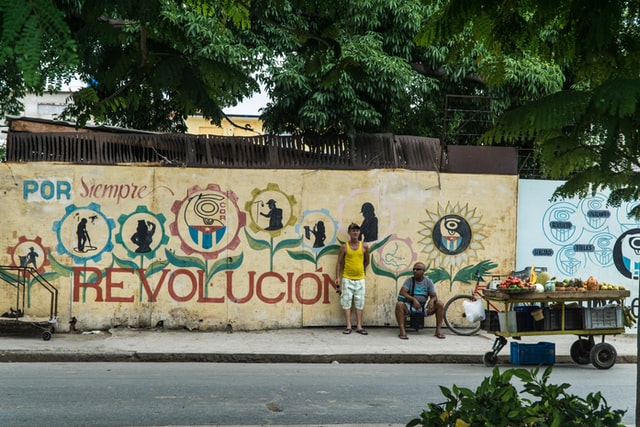Different threats among a single region
Even though many people may see Latin America as a single region with the same culture, language people and risks, it is definitely not homogenous. Most Latin American countries speak the same language and have similar cultures and identity traits, but this does not mean that every country faces the same risks and threats. In fact, according to our last speaker on the podcast, Rafael Cabrera, there are three types of hazards to Latin American countries:
- Organised crime: This threat usually refers to drug cartels operating in the region but also to other kinds of bands that profit from any other kind of trafficking i.e organised bands for human trafficking or smuggling in the Mexican-US border. In this case, countries such as Mexico, Brazil, Colombia and Peru are much more affected by this threat than other countries in the region. Hence, analyst tends to focus the risk assessments on this risk, although it is not the only risk found in these countries.
- Civil unrest: This threat has been increasing since 2019, when different protests and riots uprose in the continent, some becoming especially violent. This threat is much more specific for countries like Chile and Argentina, which are now suffering from more protests than the rest of the Latin American region indeed.
- Natural hazards: Due to the geographical position of many of the countries, bordering the Pacific Ocean like Chile, Peru, Ecuador, Panama, Costa Rica; El Salvador, Nicaragua, Mexico the risks for coastline cities from extreme weather events, rising sea levels, and often earthquakes is significant.

Common threats to Latin American countries
Even though we can classify different Latin American countries into three blocks depending on their most imminent threat, there are still certain threats that are common to the region in this year.
First of all we have corruption. Unfortunately, Latin America has been identified as a very corrupted area since the 1900s and this situation hasn’t changed. In some areas like Uruguay or Chile, it is possible that levels of corruption have improved, however, corruption is still a challenge to the whole Latin American region.
Out of the 35 countries that constitute the American continent, corruption is common amongst most elements of society, security, and government, and thus very challenging for even a willing governments and law enforcement actor to achieve significant change. Brazil, Dominican Republic, El Salvador, Haiti, Honduras, Mexico, Nicaragua, Paraguay and Venezuela are some of the most corrupted countries in the area (measured by Transparency International in their latest corruption index)
Another threat Latin American countries have in common this year is the upcoming national elections to several countries. Politics in Latin America, as said before, has had a notable link with corruption for decades and the population is now starting to raise its voice against corrupt politicians, demanding the rule-of-law and more equal and stable society. It is for this reason, those general elections now are considered a threat to countries’ stability, due to the high polarization and feeling of disagreement, violent uprisings may come from the result of these elections.

Latin American countries holding elections in 2021:
- Ecuador: Rafael Correa, who has been the President for almost 15 years, lost against Guillermo Lasso on 11 April 2021. Lasso is the first right-winged President in Ecuador, rejecting the “Bolivarian fight” trend followed by the Correistas (Correa’s followers), a very extended ideology across Latin America.
- Peru: After a very low participation rate on the first round on 11 April 2021, a second round has been implemented in order to raise participation. This second round can bring with it, the raising of violent protests and demonstrations due to the high polarization of these ongoing elections in Peru. The two candidates belong to conflictive backgrounds and represent the two extremes of the political spectrum. On the one side, Pedro Castillo representing the Marxist party. On the other side, Keika Fujimori, daughter of former Peruvian dictator, Alberto Fujimori. Polls say it is Castillo, the one who will win the elections on 06 June, however, both candidates can alternate the stability of the country drastically.
- Nicaragua: One of the most corrupt countries in the region will be holding elections on 17 November 2021. Analysts say that the actual President will try to give this position to his wife, Rosa Murillo by making fraudulent elections in the country.
- Chile: This country has just moved their elections to May due to the high number of Covid-19 cases they are currently experiencing. However, it is the first ranked country in the number of vaccinated people against this virus, figures which will probably lead to a faster economical recovery and growth from the rest of the Latin American countries. Since 2019, Chile has been drawn in many protests and riots (sometimes becoming violent) due to a civilian response towards the continued lies from both the right-wing and left-wing parties in the country. Their motto in 2019 “Chile despertó” (Chile has woken up) brought a massive wave of support to civil unrest. Election day in Chile will be a very decisive day for the population this time and can result in a new wave of these violent protests.
- Honduras: This country will be holding its elections on 28 November 2021, where one of the candidates has already been condemned for money laundering, Yani Rosenthal (actual Tegucigalpa’s major) and the other candidate, Xiomara Castro is the wife of the former President of the country between 2002 and 2009.
- Argentina and Mexico: These two countries are holding also elections but these are legislative elections, reducing the risks to the countries in this year and on this field.
Plenty of new populists have emerged due to the pandemic crisis and its consequences, destabilizing the regeion an creating a more polarized society.
2021 will be an important year in the history of many Latin American countries and thus, in the cohesion of the region. The importance of risk monitoring and strategic foresight for all companies and organisations with a presence in Latin America will be of critical importance.